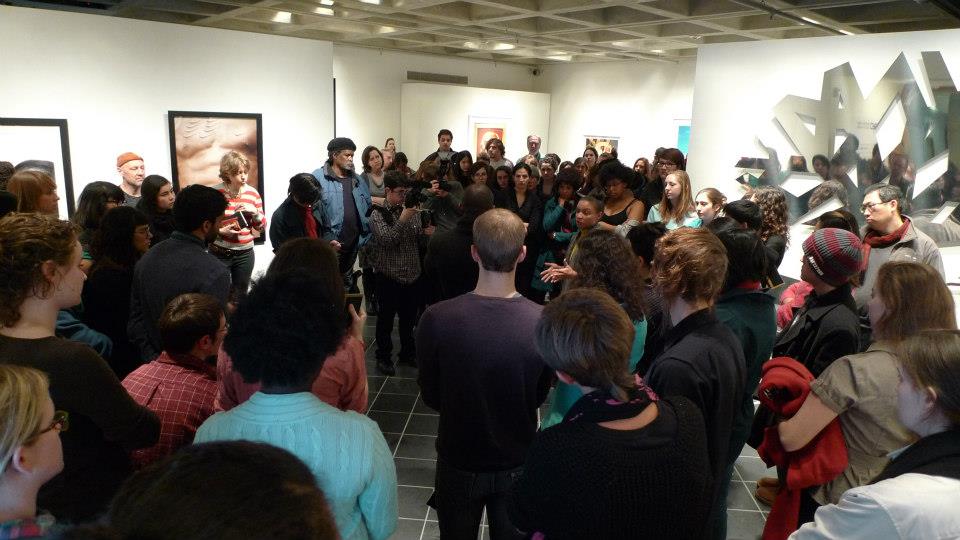What meaning can be found in the image of an appropriated image of an Absolut Vodka advertisement where the familiar image of the glass bottle shares the shape of an African slave ship? I went to the opening of Hank Willis Thomas’s Other People’s Property at the Cantor Fitzgerald Gallery out of curiosity – perhaps looking for answers to my questions. Is there even a relevant, meaningful connection? Is he just trying to be provocative?
I was there for over an hour – an hour during which probably a hundred or so students, faculty and guests listened to Kalia Brooks (the curator) and Thomas introduce themselves and address the pieces in the exhibit – some students asked questions, others, like me, listened.
Before I walked in, I grabbed a catalogue and read an essay written by Brooks addressing the exhibit and the larger body of Thomas’s work. Standing in front of the piece titled Scarred Chest I wondered why this man’s chest was emblazoned with the famous Nike swoosh I see on my soccer cleats and running shorts. I looked to Brooks for guidance: “Thomas interrogates the idea of the spectacle both by acknowledging the power of the image as it relates to the visualization (or lack thereof) of the black body and by using those images to subvert misleading narratives of race, class and gender that are embedded in history and contemporary culture.” In interrogating the spectacle as Brooks says it, gazing at an image can paradoxically entail both critique and participation—Thomas supposedly does the former. But I never put that much thought into the relationship African-American men have to the athletic industry. And if that’s the connection Thomas is asserting (right?), does Thomas then really subvert these images when he himself is forging the connections onlookers might never have previously considered? And how does the “brand” that is Hank Willis Thomas fit into all of this? Might the insidious association be participatory rather than critical? But wait…these questions are rather circular – am I ever going to be satisfied with a paradoxical answer posed by a paradoxical question?
Having stayed awhile, I’m reassured that perhaps Thomas isn’t trying to make a concrete point vis-à-vis his work, that he isn’t trying to answer the questions he poses. Rather, as he expressed quite welcomingly and playfully during the gallery talk, his work is a gesture—a pointed finger at a larger and much more complicated discussion of race, athleticism, and the American life.
Check out the table in Magill Library where you can find assorted literature on or related to Thomas’s work.


